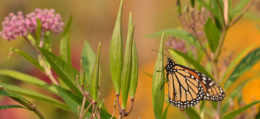Ladybugs aren’t bugs at all. They’re beetles. That’s just one thing you’ll learn in the newest edition of the Optimistic Gardener. The publication is produced by the Master Gardeners of Cornell Cooperative Extension in Chautauqua and Cattaraugus counties. Find the newsletter on the gardening page of Cornell Cooperative Extension in Chautauqua County (on the lefthand side) and in Cattaraugus County (on the righthand side)…....












